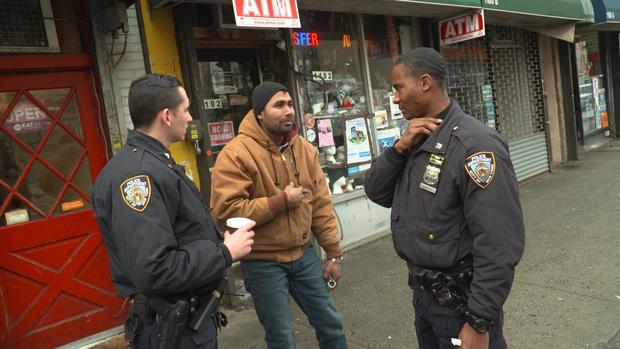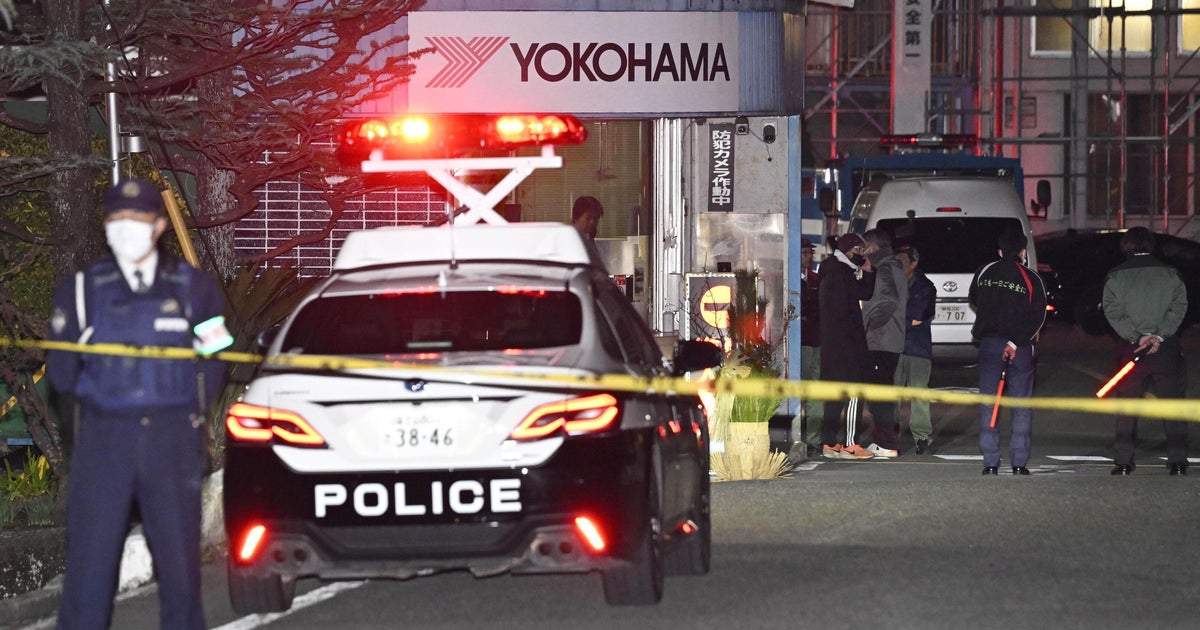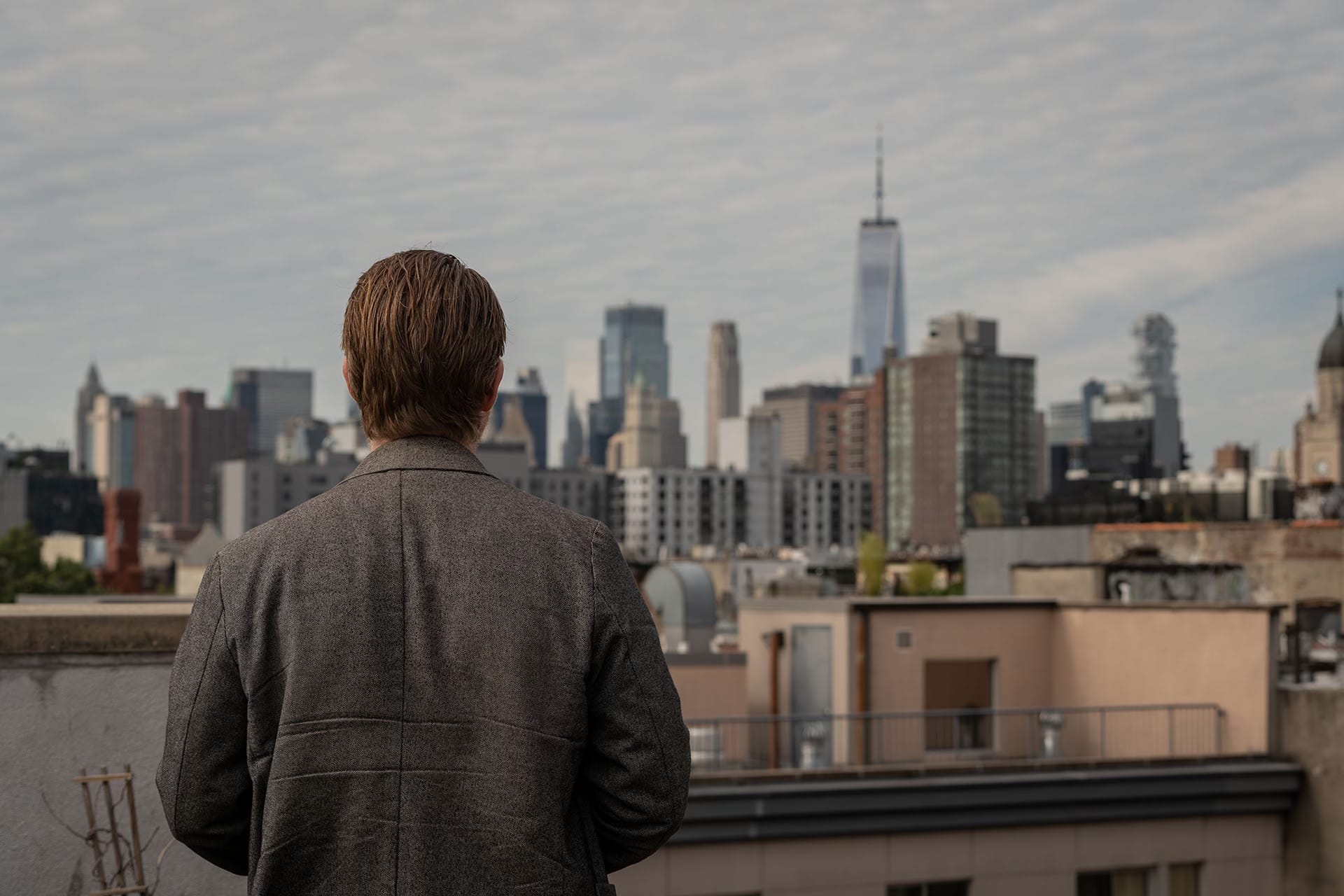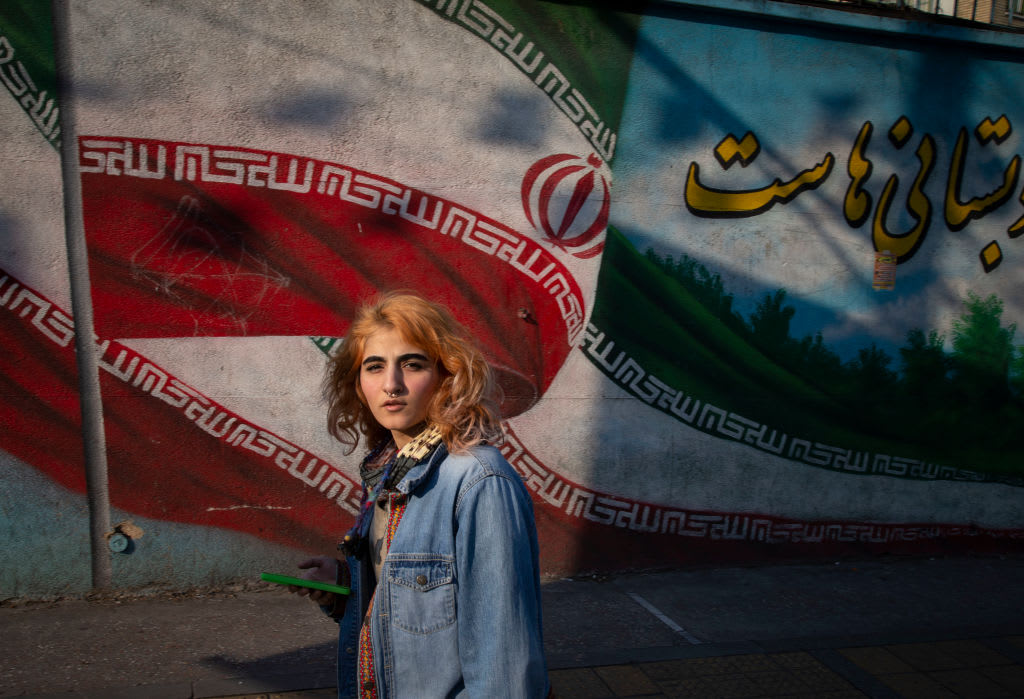Neighborhood policing program builds relationships to cut crime
In 2017, New York City saw some of its lowest violent crime numbers in decades. The nation's largest city police department reported historic reductions in crime last year, including the first time the number of shooting incidents fell below 800 and the number of murders below 300 — the city's lowest per-capita murder rate in almost 70 years. Other reductions were seen in the number of robberies and burglaries in the city.
With those benchmarks in mind, the NYPD now faces the challenges of sustaining, and attempting to surpass, that progress in 2018. The police force kicked off the year with some key internal promotions including the appointment of Rodney Harrison as Chief of Patrol. At the core of their approach to crime reduction is a concept called neighborhood policing.
"We have more police officers on the streets who are in the process of building relationships," said Harrison. "Having that shared responsibility with the residents of the city of New York, that's a great way of being able to maintain violence at a low level."
That concept of "shared responsibility" is often reiterated by NYPD Commissioner James O'Neill. In order to build a sense of unity, the NYPD is training neighborhood coordination officers through the Neighborhood Policing Program to deepen community relationships and make cops accessible to residents, not just in times of distress but as an integral part of their daily lives.
Officers John Buchanan and Robert Bramble are neighborhood coordination officers at the 79th Precinct, focusing on the people and issues of their Brooklyn community.
"The policing module is changing the way the community and police interact," said Buchanan. "It's taking officers that are generally scattered throughout the precinct everyday and assigning them to the same areas consistently so that if they have an issue, a problem in that area, that they're aware of it and they respond.... A person doesn't have to re-explain their problem over and over. It provides a sense of consistency for the officer and person knowing who's gonna show up when they call 911."
Modern technology also helps make them more accessible. All 36,000 officers in the department have cellphones and many use them as ways to be contacted by their local residents.
"Have you ever had a personal issue like if you had an ailment you had to go see a doctor? You always go see the same doctor," said Chief Harrison. "Well, it's kind of the same thing now. You have police officers in your neighborhood that are always assigned to you and you have access to them and you'll be able to call them when you need them and you'll be able to email them and there's always dialogue going back and forth."
This focus on developing more meaningful connections with neighborhood residents comes amid a tense time in modern policing. Individual cases of police brutality — often caught on video and circulated on social media — have fueled public outrage and heightened scrutiny of the actions of police officers.
Tracie Keesee, PhD, is the Deputy Commissioner of Equity and Inclusion at the NYPD and formerly served as the Deputy Commissioner of Training. In addition to her leadership and work with the NYPD, Keesee also has a doctorate in human and intercultural communications. In her thesis she focused on racial profiling and the interactions "through the car window" between law enforcement and members of the African-American community. That deep understanding of the complex societal dynamics shines through in her work.
"You'll hear a lot of conversations around unconscious bias or implicit bias, and so we're human," said Keesee of the officer's perspective. "With the person on the other side of that window — the driver, African-American, male — you're coming with a history of interactions with law enforcement hoping that it will go well, that you have everything you need for that interaction."
But some in the community say the reality has yet to live up to the promise.
Terrell J. Starr is a senior reporter for The Root and a resident of Bedford-Stuyvesant, Brooklyn, one of the neighborhoods patrolled by neighborhood coordination officers like Buchanan and Bramble. Starr argues that policing is inherently an adversarial role and putting more police officers into an area can actually increase tension with community members, especially minorities.
"The average young black male in New York City, they're not engaging with police officers at that level. The only time they're engaged with a police officer is normally in handcuffs," said Starr.
He remains troubled by how easily police encounters can escalate into the use of deadly force — and dismayed by the justifications that are often given when that happens.
"That's all it takes for a police officer to shoot you or to attack or to apply force: 'I felt.' That's something that Trayvon Martin's mother said when she was talking about policing, 'I felt.' And I hope that a black cop, or even a Latino cop when they look at me, they're not going to have that 'I felt' something or 'I fear for my life,'" said Starr.
Starr's skepticism also comes from a belief among some residents that cops, even if diverse, have more of a loyalty to their uniform than to the community — considering themselves "blue" before any other color.
Officer Bramble, both a cop and an African-American, disputed this notion.
"As police officers you have the responsibility to police each other, too. We don't just police the street and turn a blind eye to each other," said Bramble. "When people refer to the blue line, I think it's misunderstood. The blue line is a sense of camaraderie.... If you're a police officer and you're going through a hardship — whether it's maybe work-based, it could be emotional, it could be something going on at home — like, you have people that have your back. It's not a cops vs. the community thing."
But police departments nationwide have come under fire for a perceived lack of accountability in the tense atmosphere surrounding police brutality and the use of force in disputed circumstances.
"The problem comes in when a police officer engages in egregious activity and they're not held accountable, that's something that has not been touched at all. That's not an NYPD issue, that's not even a state of New York issue, that's an America issue," said Marc Morial, the president of the National Urban League and former mayor of New Orleans.
Lack of accountability is also a key concern for Starr.
"I don't think we need more contact with police, I think we need less — and more accountability," he said.
In many high-profile incidents where black men died at the hands of police, officers were not charged or were eventually acquitted. In the 2014 death of Eric Garner, the New York City cop who was caught on camera choking him, Daniel Pantaleo, did not face charges. The same was true of Darren Wilson, who shot and killed Michael Brown in Ferguson, Missouri, and the Cleveland officer who shot and killed 12-year-old Tamir Rice. The officer who shot and killed Alton Sterling in Louisiana in 2016 did not face charges either.
The officer who shot and killed Philando Castile during a Minnesota traffic stop was was acquitted. In the case of Freddie Gray's death in Baltimore, three cops were acquitted, one mistrial was declared and two cops had charges dropped against them.
The NYPD's training programs aim to address situations that could escalate to violence and prevent the situation from ever reaching the point of an unnecessary fatality.
By putting officers into high-pressure simulations before sending them into the field, the NYPD hopes to prepare officers for difficult situations, such as dealing with someone with mental health issues.
"We do the best that we can to have officers understand that some of these things you can control and some of them will happen so fast that you will have to do and react in a way that you might not find yourself normally doing. And I think that it's important, though, for us to find that balance to make sure they understand the dangers of the job," said Keesee.
"I think what we want to make sure we do here is that we not only have that understanding that safety is an issue but that you also are here to serve and to serve that community. [That] means that you need to learn that balance and that interaction and understand who you're serving."
By focusing on programs that increase community relations and diversity in the force, the NYPD hopes to rebuild some of the trust between city residents and law enforcement.
The NYPD is not the first big city police department to turn to a neighborhood policing strategy. In the 1990s, New Orleans saw a 60 percent drop in violent crime after the mayor at the time, Marc Morial, implemented a combination of community policing and community-oriented development programs. Morial recounted that they went from being a city with one of the highest number of FBI complaints for police brutality and misconduct to having just a handful per year.
Morial called the NYPD's efforts "an ambitious and worthwhile undertaking," but emphasized, "time will tell" if it's fully successful.
He stressed that police strategies alone are not enough: community-oriented programs, such as youth and economic development initiatives, must be coupled with an effort like neighborhood policing to truly have an impact.
"Certainly you've got incredible...reductions in violence in New York. I think the numbers have come down significantly. But it's important that people do not assign all the blame nor all the credit for what the situation is with public safety and crime to law enforcement. It's a wide variety of factors that goes into issues of public safety," said Morial.
Through the difficulties and complexities of policing in the modern era, the NYPD wants their force to connect and be connected with their communities.
"There's a human side of us. We're not a moving force of army," said Chief Harrison. "We're here to serve and protect, and once they see the human side of us, they begin to have a better idea and sense.... They may even want to think about becoming police officers down the road."
Morial seems cautiously optimistic about the changes taking place in New York.
"Now it's still early to be able to evaluate whether this strategy is indeed going to pay long-term dividends, and I caution against reading too much too soon, but I do think that it is the right direction," he said.






